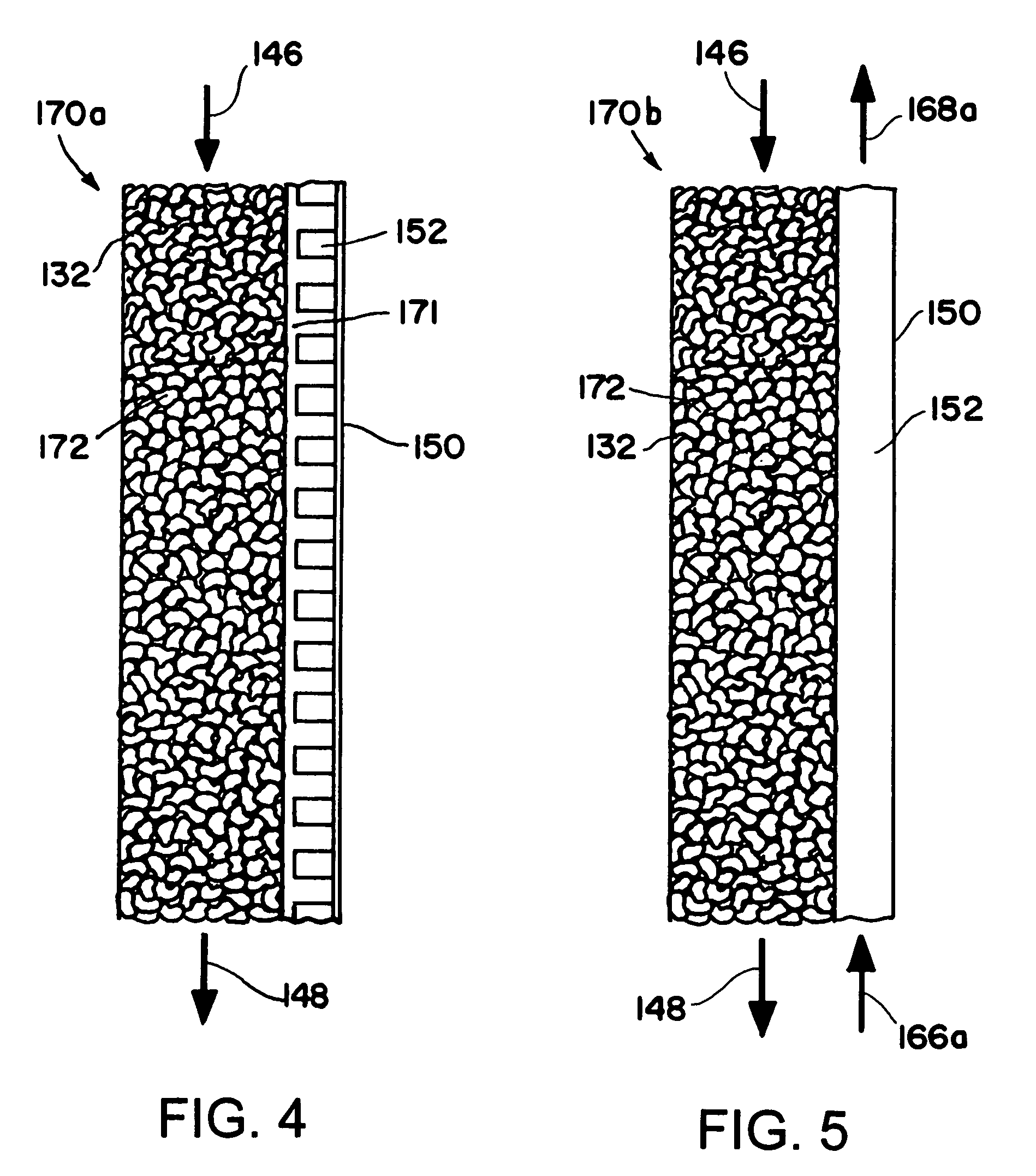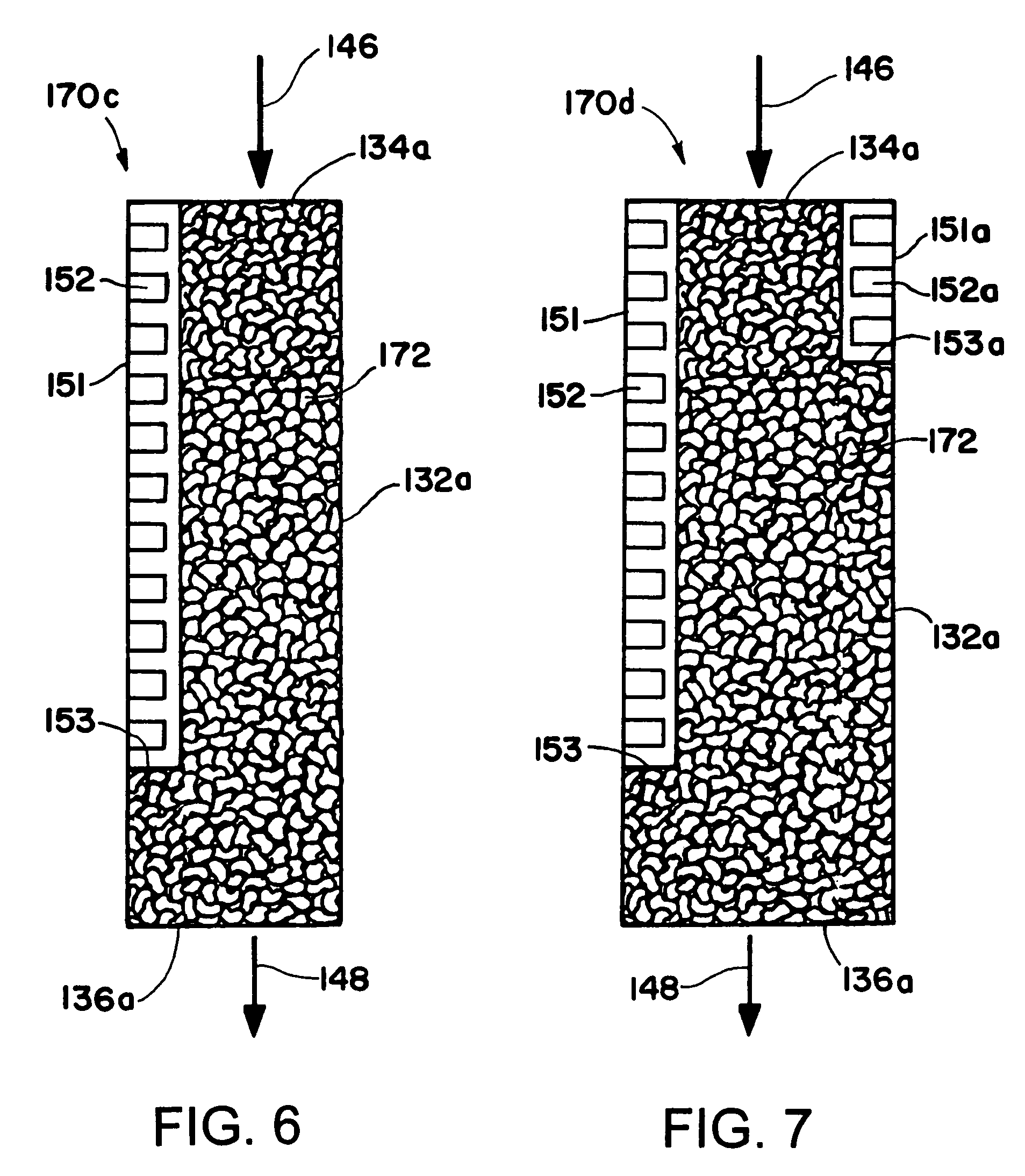Fischer-tropsch synthesis using microchannel technology and novel catalyst and microchannel reactor
a microchannel reactor and synthesis process technology, applied in the direction of physical/chemical process catalysts, metal/metal-oxide/metal-hydroxide catalysts, hydrocarbon oil treatment products, etc., can solve the problem of reducing the effective reaction rate, and reducing the selectivity of heavy hydrocarbons
- Summary
- Abstract
- Description
- Claims
- Application Information
AI Technical Summary
Problems solved by technology
Method used
Image
Examples
example 1
[0099]A multiple impregnation process is used to form a Co / Re catalyst supported on Al2O3. Separate batches of impregnation solutions (with different concentrations) are used for each impregnation. The composition of each impregnation solution is as follows: Impregnation solution A contains 31.0% by weight cobalt nitrate and 2.8% by weight perrhenic acid. Impregnation solution B contains 29.8% by weight cobalt nitrate and 2.7% by weight perrhenic acid. Impregnation solution C contains 38.7% by weight cobalt nitrate and 3.5% by weight perrhenic acid. Impregnation solution D contains 40.7% by weight cobalt nitrate and 3.6% by weight perrhenic acid. The following sequence of steps is used.
[0100](1) The Al2O3 support (1.0 gram) is calcined at 650° C. for 1 hour. The support has a Brunauer-Emmett-Teller (BET) surface area of 200 m2 / g and a Barrett-Joyner-Halenda (BJH) pore volume of 0.69 cm3 / g.
[0101](2) A first impregnation is conducted using 0.7 ml of impregnation solution A to provide ...
example 2
[0114]A single batch of impregnation solution is used for the following impregnations. The impregnation solution contains a saturated solution of cobalt nitrate to which perrhenic acid is added. The following procedure is used.
[0115](1) The Al2O3 support (1 gram) is calcined at 650° C. for 1 hour. The support has a BET surface area of 200 m2 / g and a BJH pore volume of 0.69 cm3 / g.
[0116](2) A first impregnation is conducted using 0.69 ml of impregnation solution to provide a total loading of 11.0% by weight Co and 1.7% by weight Re.
[0117](3) The catalyst is dried at 90° C. for 12 hours, and then calcined by increasing the temperature to 250° C. at a rate of 5° C. per minute and then maintaining the temperature at 250° C. for 2 hours.
[0118](4) The pore volume is assumed to be 0.52 cm3 / g.
[0119](5) A second impregnation is conducted using 0.66 ml of impregnation solution to provide a total loading of 18% by weight Co and 2.8% by weight Re.
[0120](6) The catalyst is dried at 90° C. for 12 ...
example 3
[0129]A Fisher-Tropsch reaction is conducted in a microchannel reactor. The microchannel reactor contains one process microchannel. The process microchannel has a height of 0.51 mm, a width of 0.7 cm, and a length of 5.1 cm. The process microchannel contains 0.2 gram of a Co / Re catalyst which is supported on Al2O3. The Co / Re molar ratio is 21. The catalyst is prepared using a multi-impregnation method to achieve a 30% by weight loading of Co, and a 4.5% by weight loading of Re. The metal dispersion in the catalyst is 5.4%. The catalyst is in the form of particulate solids having a particle size in the range of 177–250 microns. The solids are packed in the process microchannel. The process microchannel is cooled with an adjacent heat exchanger to the extent that the temperature gradient within the catalyst is less than 5° C.
[0130]The reactor is operated at 20 atmospheres with a GHSV of 12520 hr−1 which corresponds to 0.26 second contact time. At 224° C. the CO conversion is 50% and t...
PUM
| Property | Measurement | Unit |
|---|---|---|
| height | aaaaa | aaaaa |
| temperature | aaaaa | aaaaa |
| mole ratio | aaaaa | aaaaa |
Abstract
Description
Claims
Application Information
 Login to View More
Login to View More - R&D
- Intellectual Property
- Life Sciences
- Materials
- Tech Scout
- Unparalleled Data Quality
- Higher Quality Content
- 60% Fewer Hallucinations
Browse by: Latest US Patents, China's latest patents, Technical Efficacy Thesaurus, Application Domain, Technology Topic, Popular Technical Reports.
© 2025 PatSnap. All rights reserved.Legal|Privacy policy|Modern Slavery Act Transparency Statement|Sitemap|About US| Contact US: help@patsnap.com



